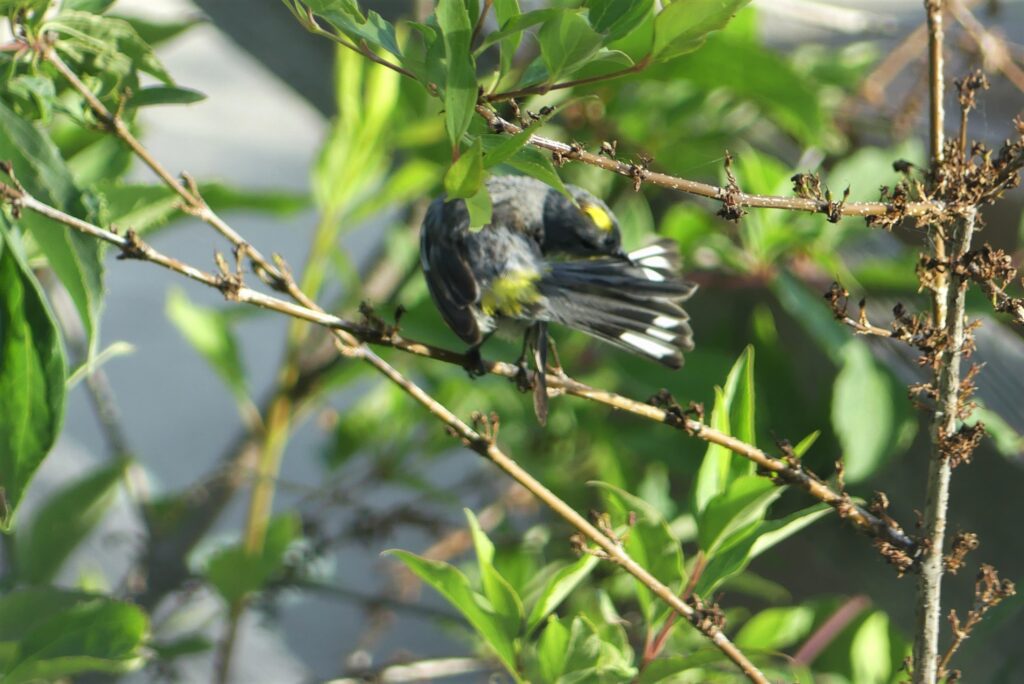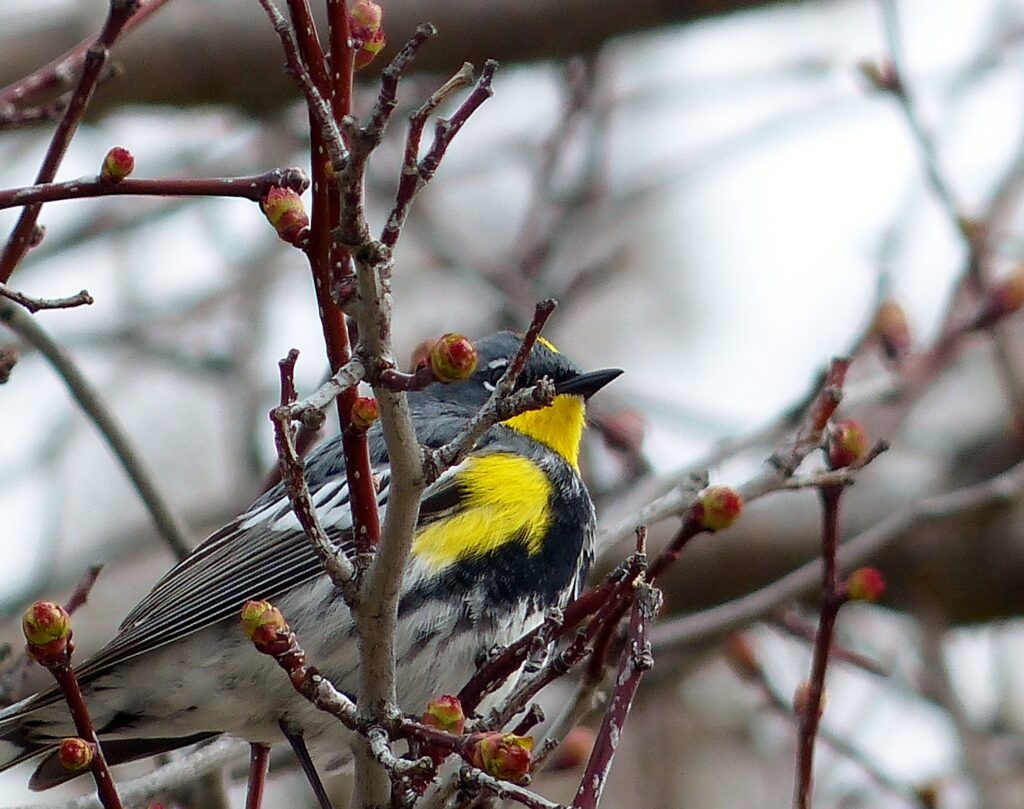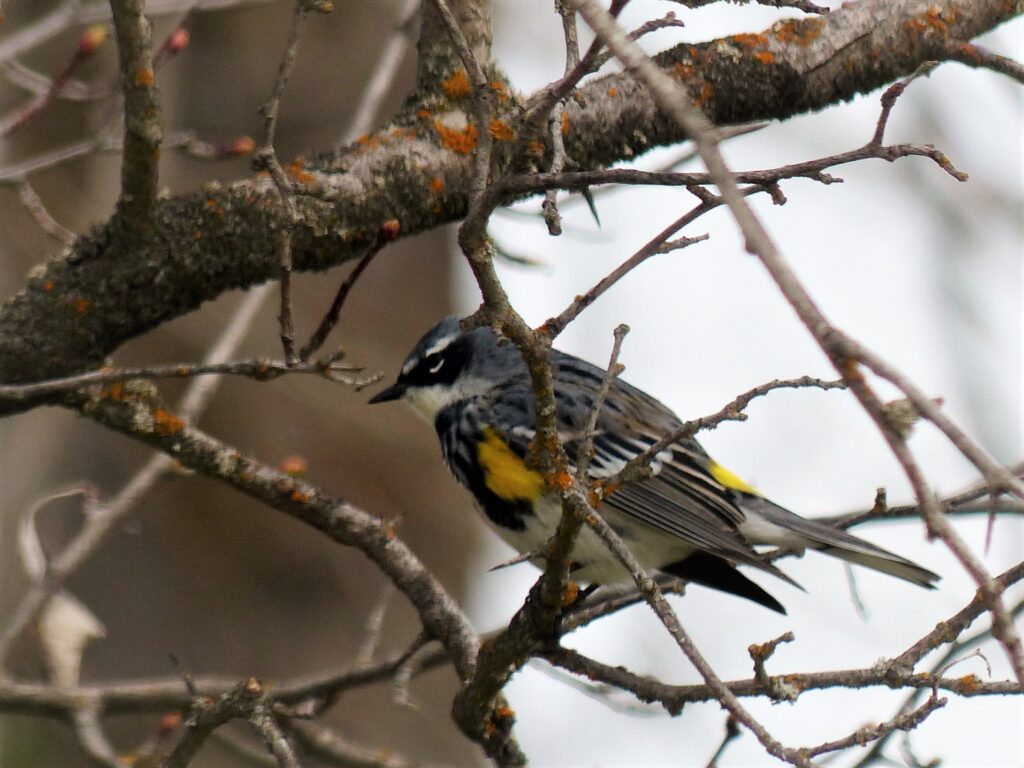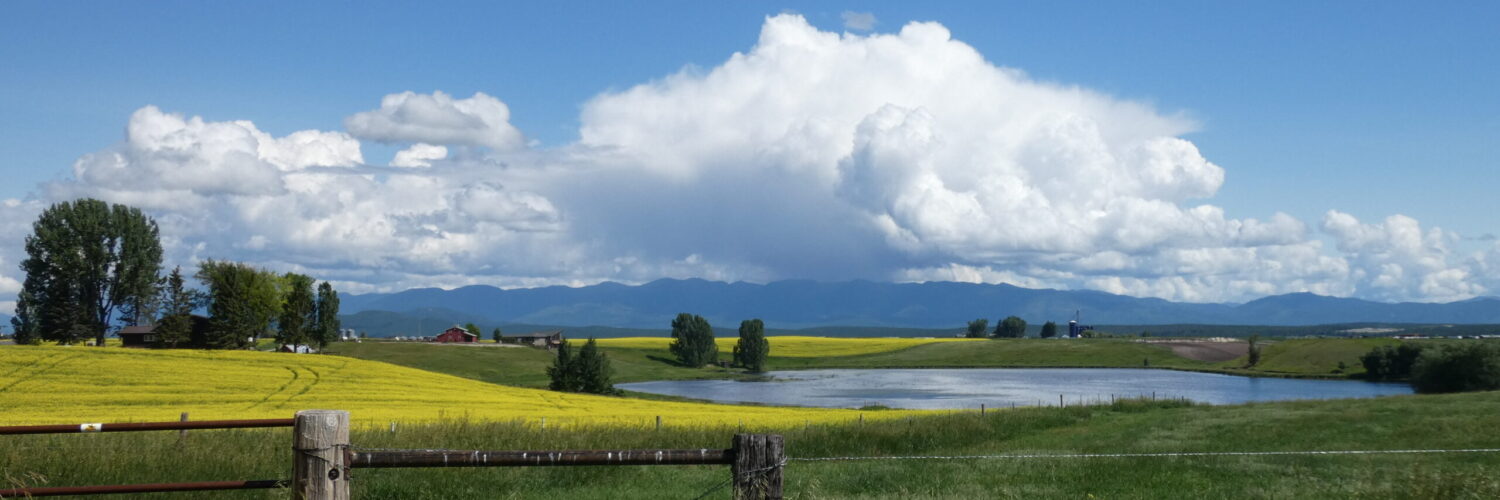by Pat Jaquith
pat@westvalleynaturalists.org
Members of the Wood-Warblers’ family, Yellow-rumped Warblers are one of the earliest Warbler species to arrive in the West Valley. There are two main populations: “Audubon’s” breeds mainly in the mountains of the western U.S. and into British Colombia; “Myrtle” breeds from the eastern U.S. across Canada to Alaska.

Yellow-rumped Warblers, though predominately insectivores, are uniquely able to eat fruits in the non-breeding season, allowing them to migrate earlier, and in some cases, to spend the winter farther north than most other Wood-Warblers. Unlike most other birds, they are able to digest the waxy coating on Myrtle (Myrica pennsylvanica; M.cerifa, and M.pussilla) berries. The Myrtle Yellow-rumped Warbler’s name is in recognition of its unique association with the Myrtle plant. Other fruits that they eat are Toxicodendron (poison ivy), Cornus (dogwood), Vitis (wild grape), and Virginia creeper.
In spring, the males of many songbird species arrive before the females do. They choose and defend a territory where they think the habitat is suitable for raising a family. I looked as carefully as I could at the Yellow-rumped Warblers that were busily looking for insects in that Hawthorne tree, but among all of them, I only saw the brightly colored feathers of the males.


Yellow-rumped Warblers often seem to be the core of a mixed flock of Warblers – and sometimes other songbirds, as well – arriving together in spring. On April 20, 2017, I was fortunate to be driving home from a walk in Pig Farm just in time to see a flock of birds in a Hawthorn tree at the edge of a little-traveled road. I grabbed my camera, hoping to figure out what they were. As I scanned through the active mass of small birds, I realized that they weren’t ‘just’ the usual Audubon’s Yellow-rumped Warblers, but they were accompanied by “Myrtle” Yellow-rumps, too!




